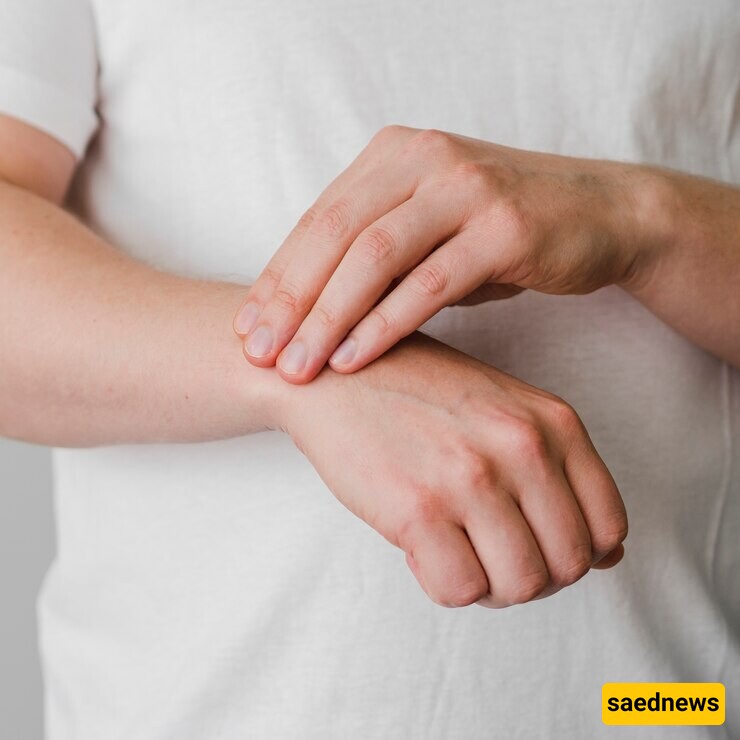SAEDNEWS: Have you suffered a wrist fracture and are looking to do exercises to aid your recovery? When can you start exercising after such an injury? Post-treatment exercises for a broken wrist can help you quickly regain full range of motion. Saeed News introduces you to exercises that are suitable after treating a broken wrist.

The wrist has over 10 bones, and fractures can occur in any of them. The wrist bones, or carpals, are arranged in two rows of four, connected like a puzzle and held together by ligaments. The forearm bones, the radius and ulna, connect to the metacarpal bones of the hand. Although wrist bones are small, their health is crucial for normal hand function. Depending on the severity of a wrist fracture, both surgical and non-surgical treatments may be necessary. Post-treatment, exercises and physical therapy can aid in faster recovery and rehabilitation. The following exercises can be started once your doctor confirms the fracture has healed and approves rehabilitation exercises.
Pain
Swelling
Bruising
Deformity
Loss of mobility or strength
If you experience these symptoms, consult a doctor for an X-ray to evaluate the wrist bones. In more complex injuries, a CT scan or MRI may be needed to precisely identify and treat the damage to bones or ligaments.

After the treatment, you can use these exercises to aid in faster recovery and rehabilitation. Perform these exercises at least once a day, and if possible, repeat them throughout the day. If you get tired, you can reduce the frequency.

1. Wrist Circles: Extend your hands straight forward and make complete circular movements with your wrists. Do this 5 times to the right and then 5 times to the left.
2. Windshield Wiper Movement: Sit at a table, place your hands on the table with palms down, and move your wrists side to side like windshield wipers without moving your forearms. Repeat this 10 times.
3. Wrist Stretch: Extend the injured hand straight in front of you with the palm facing down. Bend the wrist downwards and place the opposite palm on the back of the injured hand, pressing until you feel a stretch in your forearm and the back of your wrist. Hold for a few seconds and release. Repeat this 10 times. Then, repeat the stretch in the opposite direction by bending the wrist upwards with fingers pointing towards the ceiling, and use the other hand to gently pull the fingers back. Hold until you feel a stretch in the palm, pause, and release. Repeat 10 times. If the pressure causes pain, perform this movement gently up and down without applying pressure. Repeat 10 times.
4. Tennis Ball Squeeze: Hold a tennis ball in your hand and squeeze firmly, trying to make a fist without causing pain or discomfort. Repeat 5 times.

5. Wrist Twists: Place your hand horizontally on a table or bent knee with the palm facing down. Twist the wrist until the palm faces up. Repeat this 10 times.
Patients sometimes mistakenly believe that immobilizing the broken wrist with a cast or splint is enough for complete recovery. However, it's essential to understand the importance of exercise in healing a broken wrist and its rehabilitation. Here are some reasons why exercise is crucial:
Oxygen and Nutrient Supply: Broken bones need a substantial amount of oxygen and nutrients for healing. Exercise dilates blood vessels and increases blood flow, allowing more oxygen, nutrients, and growth factors to reach the fracture site.
Activation of Osteocytes: Muscle contractions during exercises activate osteocytes, a type of bone cell. This encourages osteocytes to signal other bone cells to create new and stronger bone tissue, helping to join the broken bone edges.
Rehabilitation of the Injured Hand: Immobilization can weaken muscles and cause stiffness in the joints. Exercise increases blood circulation, relieves muscle tension, and improves flexibility. This helps restore the hand's functionality to its previous level and speeds up recovery.
A broken wrist typically heals in about 4 to 6 weeks, but the bone continues to heal and repair itself even after this period. At this stage, exercises help restore the functionality of the muscles, bones, and joints in the injured hand. I hope you find these exercises helpful for relieving trigger points and aiding in recovery. For more similar content, visit the Sports section of Saeed News. Thank you for reading!

